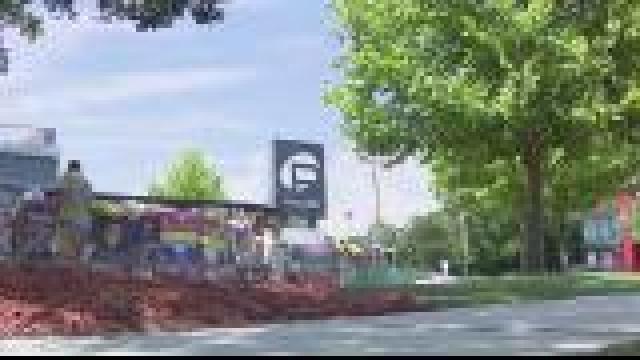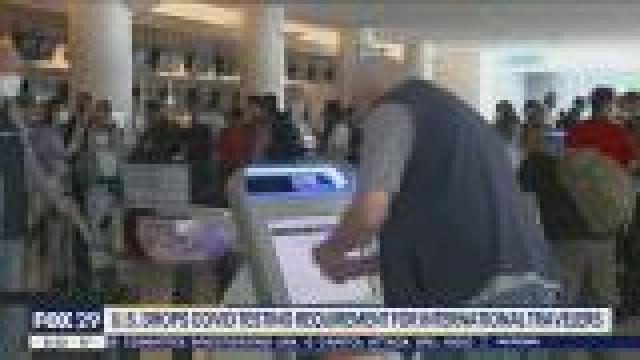The Buck Institute for Research on Aging Makes a Call for Researchers in Aging and Environmental Health Sciences to Join Forces
It’s becoming more and more obvious that the environment we live in has a lot to do with life expectancy and overall health. Is the air clean? Are there toxins in our homes and in our neighborhoods? Is there access to healthy foods and safe places to exercise? This growing awareness spawned a workshop hosted by the National Academies of Sciences, Engineering, and Medicine focusing on the integration of the science of aging and environmental health research. Buck professor Julie Andersen spoke at that conference and co-authored a report published earlier this year highlighting opportunities for synergy and accelerated research between the two fields.
The Buck’s Senior Director of Communications Kris Rebillot talked to Andersen about the overall effort.
Julie, how did you get involved in the conference?
My lab has been looking at the role of neurotoxins in the development of Parkinson’s disease for nearly 20 years. We established a link between excess iron and Parkinson’s in 2003 and identified the mechanism at play in 2016 and we’ve done a lot of work with the herbicide paraquat which is an established risk factor for Parkinson’s. In 2018 we showed that exposure to paraquat causes senescence in astrocytes, cells that have many supportive roles in the brain. The fact that I study Parkinson’s in the context of aging made me a natural for the conference.
What’s kept the fields of aging research and environmental health apart?
Both fields are relatively “young” when compared to other scientific disciplines. Environmental health has understandably been focused on the impact of environmental exposures on children. Two common examples are the link between lead poisoning and mental development and the impact of air pollution on childhood asthma. There hasn’t been as much of a focus on adults, but that’s changing.
Early on, research on aging was largely centered on understanding the molecular biology of aging without much context, meaning we didn’t look at the external factors that drive age-related changes within cells and tissues. Some studies now estimate that human life expectancy is largely (up to 95%) driven by non-genetic factors which include nearly everything in our environment. It’s pretty obvious that the two fields need to intersect if we’re going to have a significant impact on overall human health.
What has stayed with you following the conference and your work with co-authors of the white paper?
I gained a huge appreciation of how social justice factors into the aging process. People who are financially disadvantaged often live in areas where the air is polluted, experience more mental and emotional stress, and have less access to nature and healthy foods. It seems kind of obvious, but I had never thought deeply about people who find themselves stuck in unhealthy environments and how chronic exposure to environmental stressors leads to increased vulnerability to the chronic diseases of aging. I’m much more sensitive now to the influence of these factors on overall health in aging individuals and the realization that these are as important as physical factors in the aging process.
The paper refers to the “exposome” . That seems like a fairly new term. What does it mean?
So, the exposome concept was originally proposed in 2005 to include all cumulative exposures from conception onward. It included diet, lifestyle and the physical environment and it now includes socioeconomic factors and behaviors, including things such as the impact of isolation on health. There’s a new term and focus that’s coming out of the work called “gerotoxicity”, which looks at how exposure to toxins at any age impacts the aging process. It could become a new subspecialty in the research world.
Is there a strategy for building a bridge between environmental health and aging research?
It’s no surprise that bridging disciplines takes a lot of multidisciplinary collaborations. In this case we identified toxicology, comparative biology and epidemiology as beginning points.
We need to identify existing or new biomarkers that can be used to help us gain an understanding of how lifetime exposures to toxicants and other physical and social stressors alter biological aging. This would help us understand why older adults often have a diminished ability to compensate and recover from exposure to adverse stressors. We really need to reexamine all of the factors known to drive aging – cellular senescence, protein instability, mitochondrial dysfunction, and DNA instability, among others, through the novel lens of gerotoxicity.
We talked a lot about the role of the microbiome at the conference. Current data suggests that environmental factors can contribute to alterations in the gut microbiome. There’s a growing interest in the microbiome in our field because age-related changes in the gut have been associated with systemic inflammation, immune and metabolic dysfunction, and even neurodegenerative diseases. We need to understand the role the environment plays in driving those changes.
In my lab we study autophagy, a process whereby the cells recycle damaged proteins and mitochondria. Autophagy declines with age and has been identified as a player in many age-related diseases. There’s every reason to surmise that environmental stressors are likely contributing to that decline.
So what happens next?
Great question. In the larger context a lot will depend on whether the NIH, probably through the National Institute on Aging and the National Institute of Environmental Health (NIEH), decide to fund projects that support the two fields working together. Often conferences like the one I attended are put together with the express intent of giving scientists opportunities to get to know each other and to brainstorm about possible synergies. I hope the NIH took note and makes this research a priority.
After the conference, I personally collaborated with one of the co-authors who works at the NIEH to look at the brains of aging mice. Some were raised in a germ-free environment (meaning they had no microbiome) and others in a normal environment. We got some interesting data that suggest that microglia, which can get inflamed with age, appear to do better in mice raised in a normal environment.
I expect that the conference will result in additional collaborations, similar to the one I just described. It would be great if the federal government invested in the larger scope. It’s an endeavor I’d be excited to be part of.















